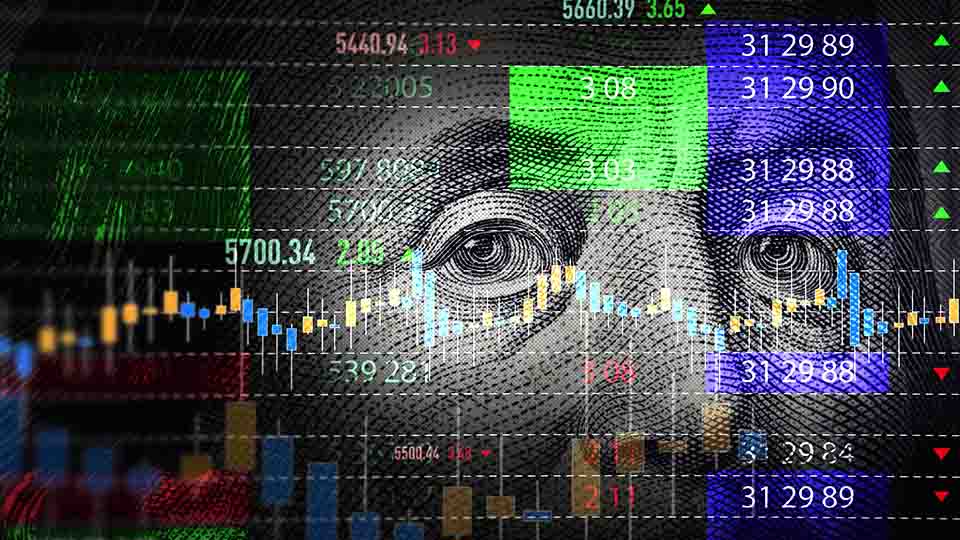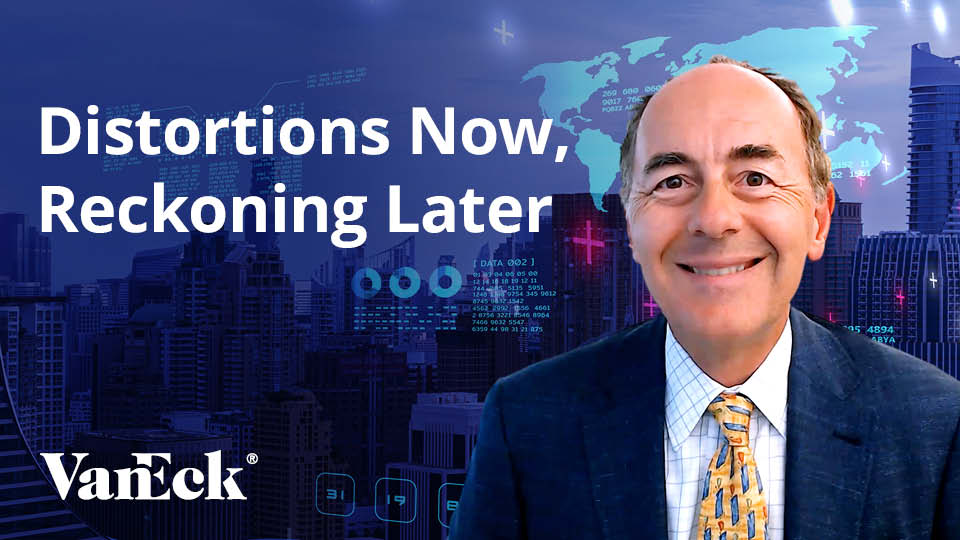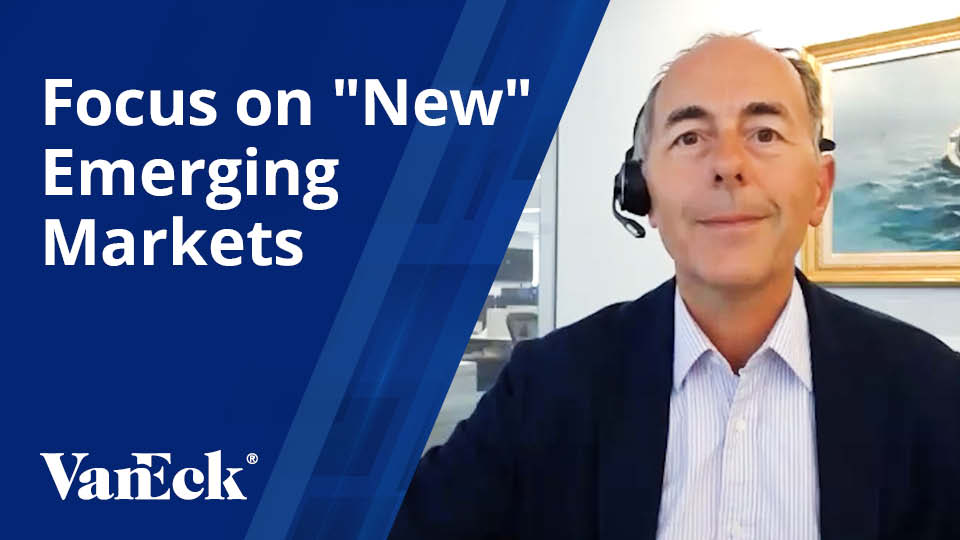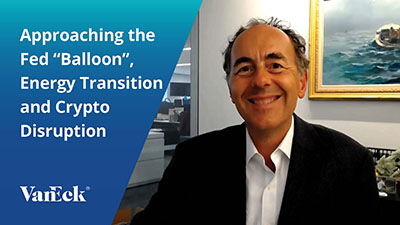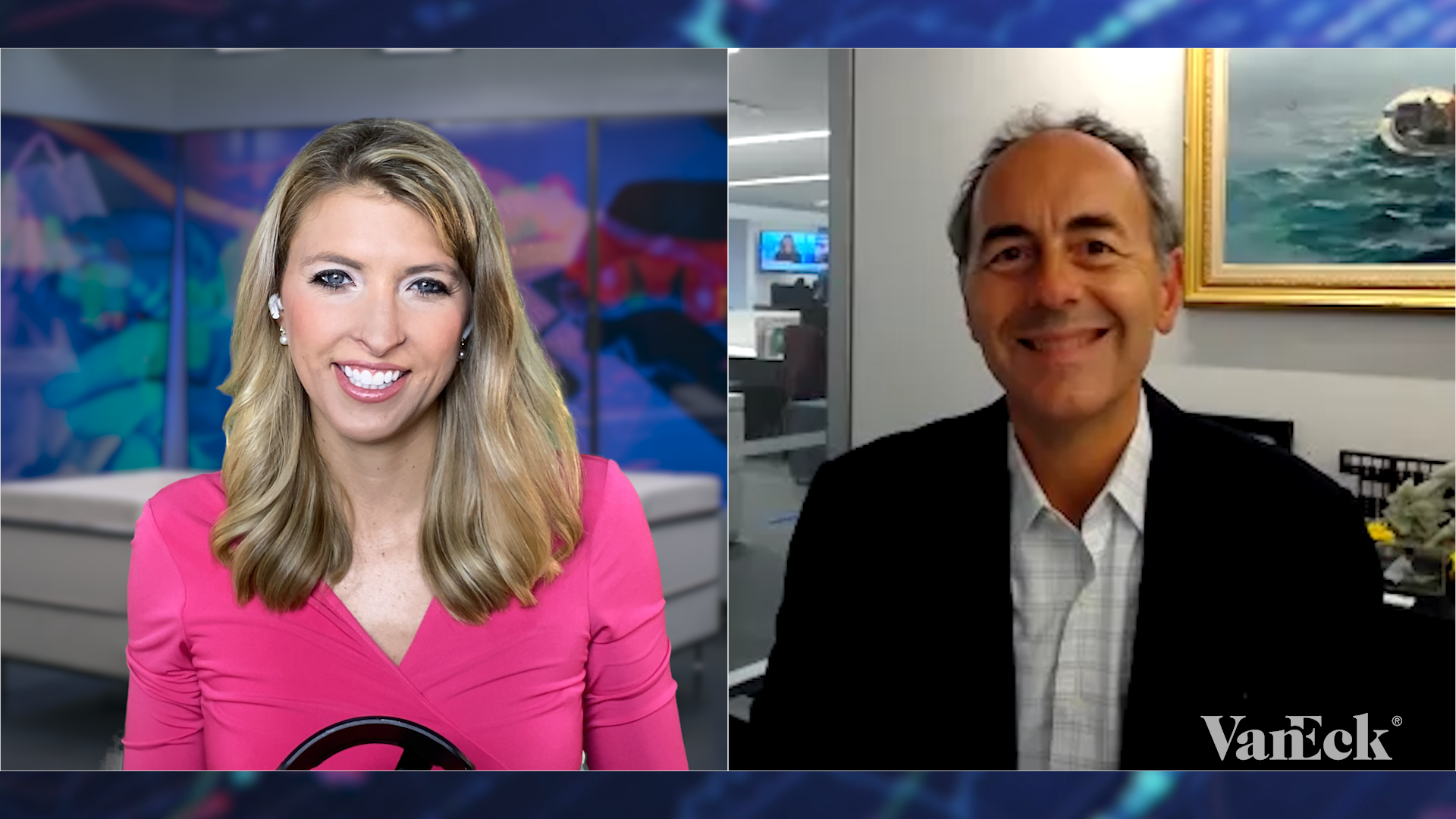2019 Outlook: Don’t Fight the PBOC
04 December 2018
Watch Time 10:10
2019 Outlook: Don’t Fight the PBOC
NATALIA GURUSHINA: Welcome. I'm Natalia Gurushina, Chief Emerging Markets Economist at VanEck. I'm here today with Jan van Eck, VanEck CEO, to talk about his views and ideas.
So, Jan, what should investors know about 2019, and what should they have in their portfolios?
JAN VAN ECK: So, the thing I'm really focused on for 2019 starts with what I got really wrong in 2018. The big surprise was the underperformance of Chinese equities. I was there several weeks ago, trying to figure out what did we get so wrong.
Corporate profitability growth was good. The economy was good. We always used to say that the Chinese economic growth was balanced between the “Old China” and the “New China.” So why did equities fall so much?
The one story that I think investors are missing, or the one I really like to talk about, is what are the central banks doing?
In China, the reason that stocks fell, I think is a result of a deleveraging in their economy, that started a year or two earlier.
GURUSHINA: What kind of role do you think trade tensions played in this process, because clearly everybody's talking about this? But perhaps the policies had a greater impact on the economy, on growth specifically.
VAN ECK: Yes, I mean, I think that we spent a lot of time talking about a lot of short-term things, trade tensions, politics gets a lot of air time in the United States, but that's what my insight was, is that, look at liquidity. What central banks are doing to the markets.
What happened in the United States after our financial crisis, right? We got much looser financial conditions, and we had a bull market in stocks and bonds for almost eight straight years. So, that's the lesson we know in the U.S.
In China, this deleveraging should have signaled something. But now, what's happening is that, starting this summer, in 2018, the PBOC (People’s Bank of China) cut short-term rates by 200 basis points. They were stimulative. It usually takes about six to twelve months for that to kick in, so for 2019, either in the first quarter or the second quarter, we really should expect a boost to Chinese assets, and to their economic growth.
Now, between now and then, there's going to be some uncertainty, because we don't know when that will kick in, number one. Number two is, there are trade tensions. And then number three, the Chinese New Years occur in either January or February, so the year-over-year statistical data is always muddled. So sometimes it takes until March until we know what just happened.
So, there's uncertainty. Markets don't like uncertainty until then. But one of the stories of 2019 should be that Chinese assets rise because of central bank easing, and the other point I would make is that's completely out of sync with the rest of the world.
Where Japan, the U.S., Europe, everyone, slowly for sure, but they're tightening, reducing QE (quantitative easing), and raising short-term rates.
GURUSHINA: So it's the policy decoupling, in a sense, between China and the rest of the world. Can I actually dig a little bit deeper into the growth consideration, because I think there is a little bit more to that story?
If you look at China, China no longer looks special, as regards growth rates, and probably by 2020, if you look at consensus rates, it will look even less special. It actually is expected to grow less than the rest of emerging Asia.
So, what will make China attractive again in the eyes of investors? Are we talking about, it's probably not just releveraging or providing more credit to individual companies, small or medium-sized companies.
VAN ECK: Right.
GURUSHINA: Are we talking about regulatory environment? Because there should be something else if China growth doesn't look amazing.
VAN ECK: You're totally right, and that's a hugely important point. The first phase of China growth is over. 8-10% GDP growth, get that out of your mind. And I think, looking forward, the markets are much more realistic. Let's call 4-5% GDP growth, and forget about “Boom Boom” China. That's okay. You know they're so big, their economy, 4% growth is actually fine, and companies can definitely grow profits at 10-20% in that kind of economy, because the economy is so big, and some sectors are going to be growing at much higher rates. I think that that's fine. But you're right, I think a little bit this summer, the markets were adjusting to that new trajectory.
The second issue, besides understanding central bank policy, is what is the regulatory environment in that New China? Because Xi Jinping is very much favoring state-owned enterprises as the Communist he is. Those policies that help state-owned enterprises (SOEs) are negative for China's private companies, and for foreign private companies doing business in China.
So, the question is, what is he signaling? In the next five or 10 years, what is China's economic policy going to be? There are uncertainties, because it keeps changing.
But, in the last month or two, he’s signaled that he understands that private enterprise generates most of the jobs in China, and that's a key component. But we have to watch that space, absolutely.
So, they're competing for our investment dollars, based on not just growth rates, but regulatory climate as well. And I think you're right, I think people will look at other countries for investment dollars. It's a competitive world.
GURUSHINA: But, you know, there is another interesting consideration here. It is that in a sense, small and medium companies become a victim of success of certain policies in China. Right? What really impressed me quite a lot is that despite the growth slowdown, despite other market economic imbalances, one area where the Chinese central banking, the government, has been kind of doggedly pursuing their targets, initial targets, is reduction of shadow financing. But who were the major consumers of shadow financing? Small and medium size enterprises. So, it's not just, and I wanted to hear your thought on this. They should be introducing more stimulus, maybe targeted to these specific groups of companies. And again, it's not that they should benefit over state enterprises, but it clearly …
VAN ECK: Let's put it less politely: "Jan, you're wrong, because how can they be stimulating, when at the same time, they're trying to fix the imbalances in their financial system, which is inherently not stimulative?"
GURUSHINA: Especially for those companies that can actually drive growth.
VAN ECK: I don't deny at all that you don't just give more money to the banks and the banks give it to private companies. That is not the mechanism in China. My counter to that is, there are a whole bunch of other steps that China's taking, fiscal steps, regulatory steps, that should, “net, net, net,” be stimulative. So, I agree, it's a much more complicated story close-up, but at the big picture, “Don't fight the Fed” (U.S. Federal Reserve) is a basic saying about investing.
GURUSHINA: Don't fight the PBOC.
VAN ECK: “Don't fight the PBOC.” The efforts of the government to stimulate the economy. So, that's, looking at 2019, that difference between China and kind of the developed market, which is going to be slowly tightening.
GURUSHINA: But then, if your view is that the Chinese growth rate should start perhaps to look a little bit more attractive, six or twelve months from now, what does it mean for commodities? Because commodities probably did not perform as well as expected this year.
VAN ECK: There's only two engines, oversimplifying, of the world economy: China and the U.S. If one of them starts pushing forward, and you know the U.S. is doing okay …
GURUSHINA: Yes.
VAN ECK: Right? Then that should help on the margin for commodity demand. They're so linked. Almost, I mean, you wonder if they're different asset classes.
So, Natalia, I've been talking a lot about China and how I think that they will be stimulating and that will help their growth and stock and bond markets in the early part of 2019, at some point. What about the rest of an investor's portfolio: stocks, bonds? Looking forward, is the Fed going to slow the pace of interest rate increases? Are you more excited about bonds? More excited about stocks? What do you think?
GURUSHINA: You know, there's something happening very interesting in the past few months, past few quarters. It is a change in correlation between bonds and equities. So, that correlation started to go up again, which basically means that using bonds as a hedge in your portfolio is becoming more difficult.
VAN ECK: Okay, yeah, because a lot of people use them as shock absorbers …
GURUSHINA: Indeed.
VAN ECK: if you will. And you're saying, maybe not so much. So, what else do you look at? Do you look at cash or ...?
GURUSHINA: Well, cash, that's definitely is one of the possibilities. But I really would like to emphasize that that correlation between bonds and equities is changing. It's not as high as it used to be prior to 2000, but the trend is clearly is going up. We think it will be more difficult to use bonds in this environment as a shock absorber in the portfolio.
Jan, thank you very much for your insights, and thank you for joining us today. For more information, please visit us at vaneck.com/ucits/subscribe. Thank you.
